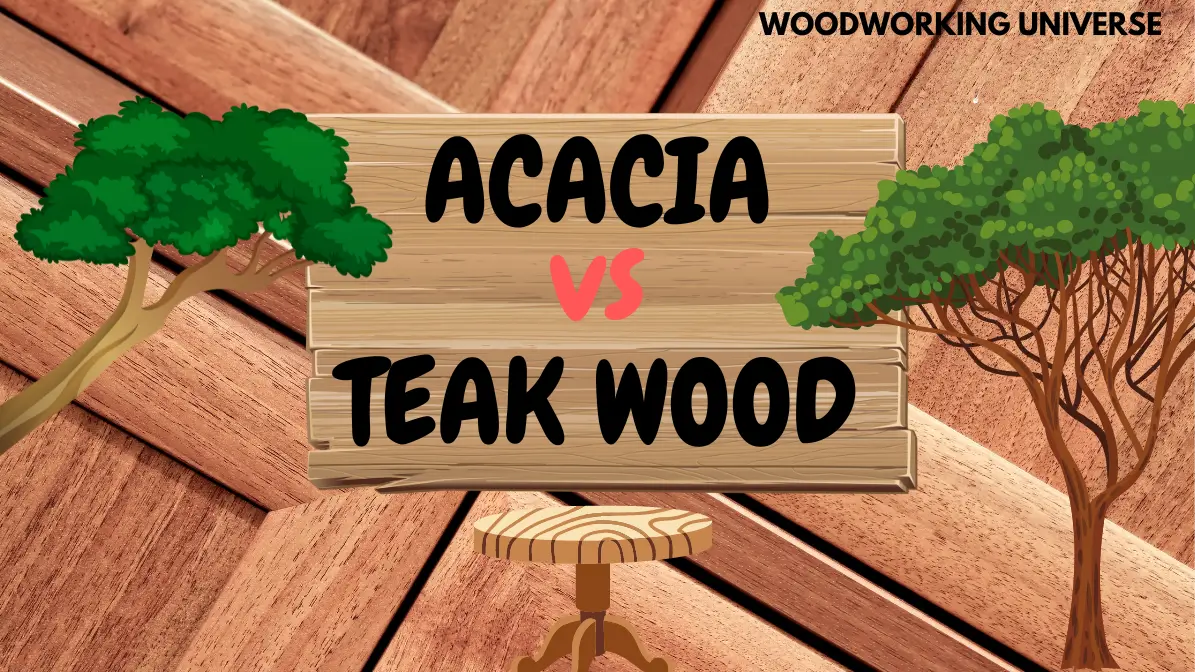Have you ever wondered the main difference between acacia wood vs teak wood? If you want to make your garden or terrace beautiful, it is important to choose all the furniture wisely. Each wood provides certain qualities, there are woods that work better outdoors and others indoors, others may offer better durability or others may be more expensive or cheaper. The most popular woods used to make garden furniture are acacia wood and teak wood.
We offer you a comparison of acacia wood vs teak wood for outdoor furniture. In case you want to save 10 minutes reading, we tell you that our clear winner for outdoor furniture is teak wood. Keep reading and you will discover why!
If you want your garden furniture to shine like the first day, look aesthetically pleasing, last for many years, and not get damaged by rain or heat, keep reading and you will discover the best option between teak wood vs acacia wood.
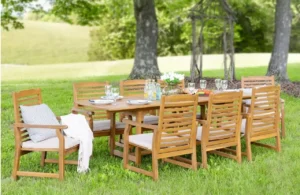
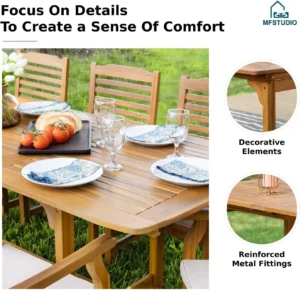
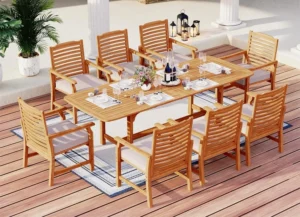
Acacia vs Teak Wood General Characteristics
Acacia and teak woods are the most popular options for garden furniture. It is mainly due to its unique characteristics and durability.
Origin
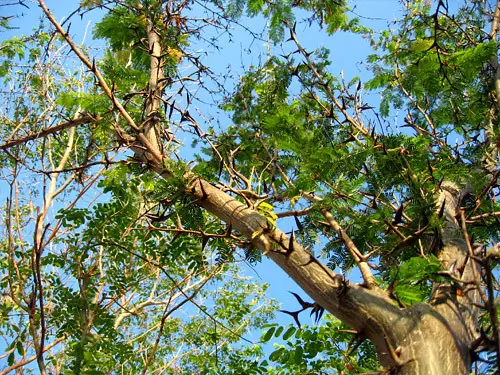
Acacia Wood
These trees can be found in tropical and subtropical regions. Above all, they are typical in Australia, Africa, and some areas of Asia and America.
Teak Wood
Teak wood is typical only in areas of South and Southeast Asia such as India, Thailand, Malaysia and Indonesia. Because of its high value, it has also begun to be planted in Africa and South America.
Availability
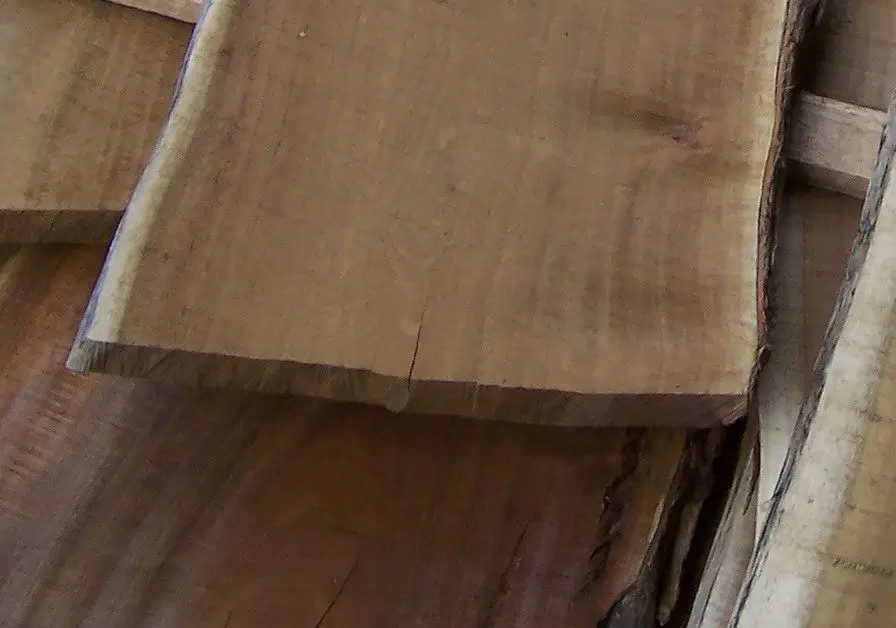
Acacia Wood
Acacia wood is very abundant, this is because it is grown in many areas where the requirement is a warm climate. In addition, its wood grows quickly and does not require waiting as long as with other woods. Therefore this type of wood is very accessible for furniture and is very present in the market.
Teak Wood
Teak wood is slow growing, and also the tree that produces this wood is not found in as many regions as acacia wood, therefore teak wood is much scarcer. An attempt is being made to increase the production of this wood by growing this type of trees in more regions, but even so the presence of this wood in the market is scarcer.
We have seen that teak wood is much scarcer than acacia wood, therefore it will be much more difficult to find on the market when buying furniture. Acacia wood is the more accessible of the two. A point in favor of choosing this type of wood.
Which Wood has the Best Appearance?
Comparing the aesthetics of each wood is also important, each person has different tastes, but we leave you a summary of what tones and touch each wood offers.
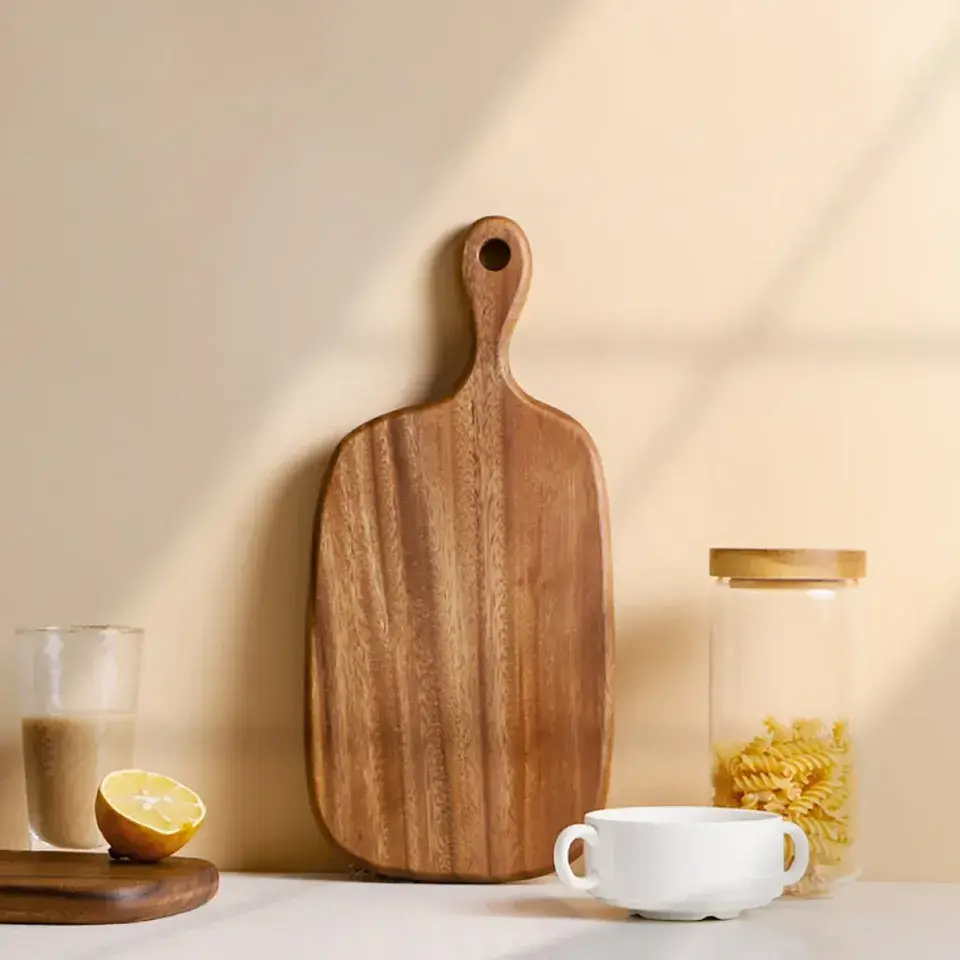
Acacia Wood
The color of acacia ranges from golden brown to reddish brown. These tones give it a homey and cozy appearance. It is a color with very warm tones.
The touch of this wood is a little irregular. It can be straight, wavy and crisscross. This type of touch gives the wood visual depth, it has its own texture and its touch is natural.
Teak Wood
Teak wood is very famous for its golden brown color, which can darken slightly to a richer tone with sun exposure. These colors give the furniture a more mature appearance.
The touch of this wood is straight and sometimes wavy. It has a smooth and attractive finish, ideal for high-quality furniture that displays an elegant and soft-touch finish.
There is no clear winner when it comes to appearance as each wood offers different textures and tones. But we conclude that acacia adapts more easily to a more rustic style. On the other hand, teak is better for more refined and uniform styles.
Durability and Weather Exposure
The outdoor durability of each wood is probably the most important factor to take into account, these two woods are very resistant but each one has important peculiarities.
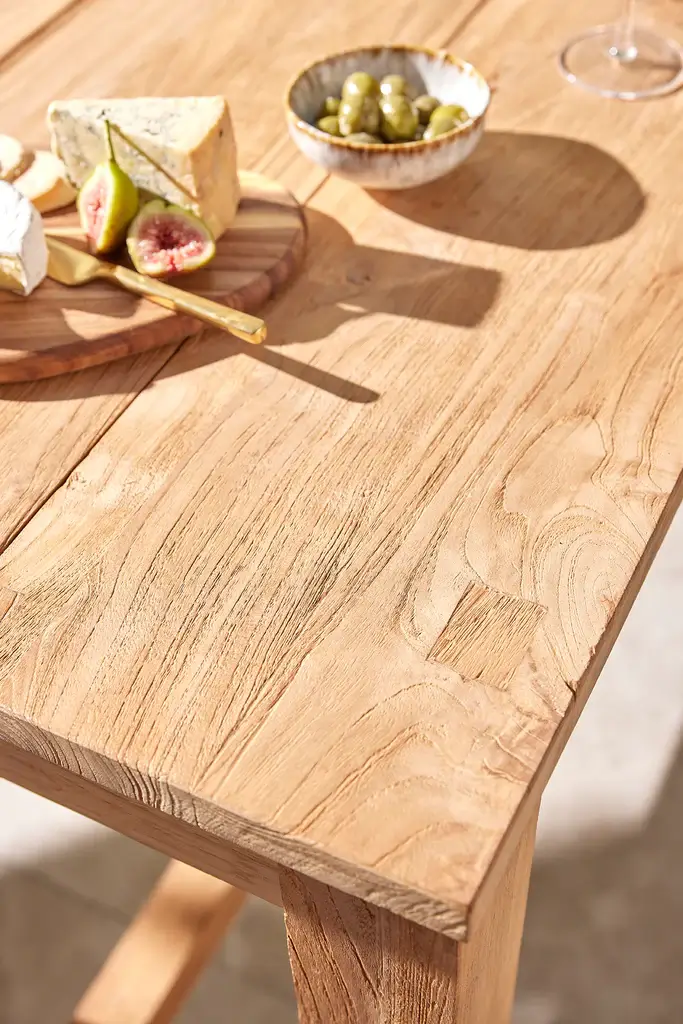
Acacia Wood
Acacia is a very resistant wood, ideal for outdoor use. It is resistant to rot and insects such as termites. Acacia wood has natural oils that make it resistant to fire and prevent the wood from shrinking.
It must be properly treated with sealants and treatments to protect it from humidity and UV rays. This wood can warp, crack, or discolor over time due to exposure to weather (extremely high temperatures) if not treated properly.
It is important not to keep the acacia in prolonged contact with the sun, and also to keep in mind not to apply products such as alcohol, perfumes or cleaning products with bleach, as they could damage the wood.
Teak Wood
Teak is considered the best wood for outdoor furniture. This is due to its great resistance to rot, insects, humidity and other weather conditions (it can withstand high temperatures).
Teak wood contains great natural oils to combat prolonged contact with water without rotting. Although it may discolor to a silvery gray over time, teak wood can last for decades without regular treatment.
Thanks to the origin of teak trees, in South Asia, where they have to withstand high temperatures and a very humid climate, it makes this type of wood so resistant to water. With good care your furniture can easily last more than 50 years.
In terms of durability, teak wood takes first place. Its natural oils act as a termite repellent, make it more resistant to high temperatures, humidity, rain, it does not need regular treatments and your furniture can last several generations of your family without any problem!
Acacia vs Teak Wood Maintenance
Teak is known for its low maintenance due to its natural oils that protect the wood. Acacia requires more regular maintenance to preserve its long-term beauty.
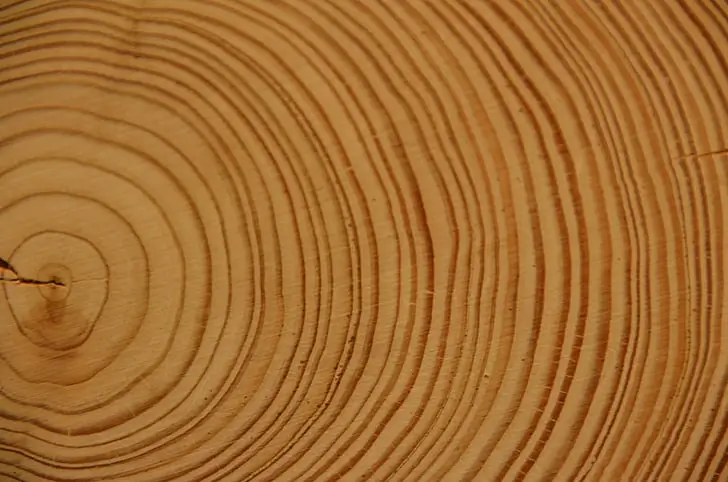
Acacia Maintenance
Sealing and Oiling: To protect against moisture and UV rays, it is recommended to seal acacia wood with a quality sealer or specific wood oils. You should do this process at least once a year or even more frequently.
Regular Cleaning: Cleaning acacia furniture with a soft cloth and mild detergent can help prevent the build-up of dirt and mildew. Make sure the wood is completely dry after cleaning it.
Avoid Prolonged Exposure: Avoiding prolonged exposure to direct humidity and intense sun can prevent premature wear. It is important to use covers during periods of non-use or under extreme weather conditions.
Teak Maintenance
Occasional Cleaning: Teak should be cleaned only occasionally to remove accumulated dirt. This can be done with soapy water and a soft brush.
No Sealing Needed: Teak does not need sealants or oils to maintain its durability. Most people prefer not to treat teak so that it takes on a natural silver-gray patina over time.
Patina Care: If you prefer to maintain the original golden color of the teak, you can apply a teak oil once or twice a year. However, this is more a matter of aesthetics than a need for protection.
Regarding the maintenance needs of each wood, teak wood requires almost no care or treatment to make it last over time, so it is our favorite option!
Teak vs Acacia Wood Price
The prices of teak and acacia furniture can vary enormously, and everything will depend on the accessibility of each wood as we have mentioned before.
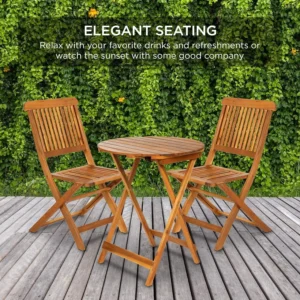
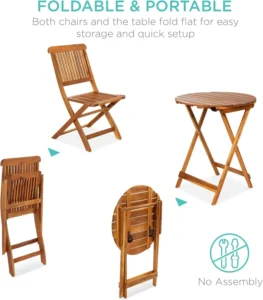
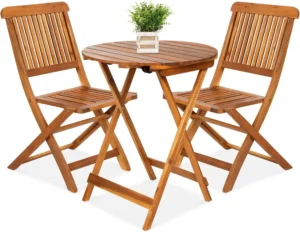
Price for Acacia Furniture
Acacia wood is usually cheaper than teak wood, this is because its trees grow faster and therefore its production costs are lower. Their furniture has an excellent quality-price ratio and is excellent for people who do not have a large budget to spend.
Acacia wood chairs can cost around $100. An outdoor dining table could cost about $600-$1.000. This are approximations for standard furniture, depending on each type of furniture the prices can go up.
Price for Teak Furniture
Teak wood always tends to be more expensive than acacia wood, this is due to its slow growth and it is grown in few areas, which means that there is little supply. There is a high demand for this wood due to its ability to last for decades.
The price of furniture can vary greatly, you can find teak wood chairs from $200 onwards. You can find outdoor dining tables that cost from $1,000, although the average price of these is between $2,000 and $4,000.
Each wood offers a different price according to its own qualities. Acacia furniture is more affordable, teak furniture, on the other hand, requires more budget but offers higher quality. We always choose those materials that offer higher quality, therefore, despite the price, we prefer teak wood since it provides us with longer durability that can be seen as an investment.
Environmental Impact
Timber production, including acacia and teak, has diverse environmental impacts, which vary depending on how forestry practices are managed.
Environmental Impact of Acacia
Fast Growth Acacia grows quickly, which can be beneficial from a sustainability point of view, as it can be replanted and harvested in shorter cycles. For this reason we consider that this type of wood is “eco-friendly” as it renews quickly.
Environmental Impact of Teak
Teak has a long growth cycle, meaning trees cut today could have taken decades to reach their full size. This may cause concerns about its sustainability. Recently there has been an increase in teak plantations to mitigate the impacts of deforestation.
You will have to make sure that it has the “FSC” (Forest Stewardship Council) label: This is one of the most recognized certifications worldwide for sustainable forestry. It ensures that the wood comes from responsibly managed forests.
As we have explained, acacia wood is superior in terms of more sustainable production and ensures that it is produced more responsibly than teak wood.
Acacia Wood versus Teak Wood
Still have doubts about which wood to choose for your outdoor furniture? Then let’s break the tie. We will teach you more differences between them and when you should use each one.
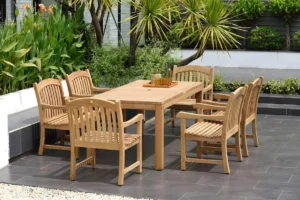
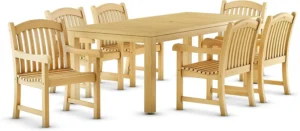
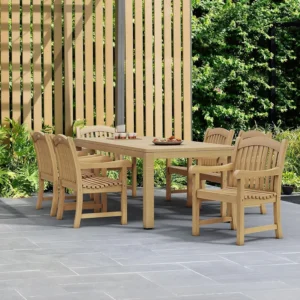
1. Types of Furniture Ideal for Each Wood
Acacia furniture
Indoor Furniture: Acacia is perfect for indoor furniture such as benches, chairs, cabinets and tables due to its resistance and natural beauty.
Outdoor Dining Sets: Due to their durability and attractive aesthetics, dining sets made from acacia are popular for outdoor use (as long as the furniture is not exposed to too much sun or humidity).
Rockers and Hammocks: The hardness of acacia allows its use in furniture that requires supporting more movement and weight.
Teak furniture
Sun Loungers and Sun Chairs: Teak is very durable, making it ideal for sun loungers and sun furniture that remain exposed.
Luxury Outdoor Furniture: Due to its durability and low maintenance, teak is preferred for luxury furniture on terraces and outdoor spaces.
Nautical Furniture: Teak’s resistance to salt water makes it ideal for manufacturing furniture on boats and marine environments.
2. Types of Wood Ideal for Each Environment
Temperate and stable climates
In climates where humidity and temperatures are moderate, acacia performs well, especially if properly maintained with sealants to protect it from excess moisture.
Tropical, Coastal and Humid Climates
Teak is unmatched in coastal and tropical climates, where humidity and salinity are high. Its natural resistance to these factors makes it extremely valuable.
3. Janka Hardness Wood Test
Janka hardness is a measure of the strength of wood. It is determined by measuring the force necessary to drive a 0.444-inch diameter steel ball up to half its diameter into wood.
Teak wood generally has an average Janka hardness of 2,330 lbf. This makes it hard enough to resist wear and tear.
Acacia wood has a Janka hardness that varies significantly depending on the species, but in general, the species of acacia commonly used for furniture can have a Janka hardness that ranges around 1,750 lbf.
More types of wood for outdoor furniture
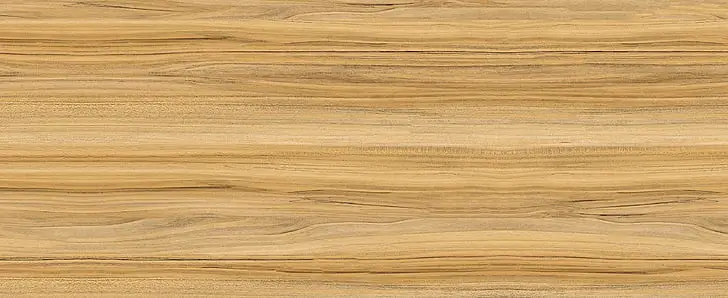
Cedar
Cedar wood offers the perfect characteristics for your outdoor furniture. It is a very durable wood that contains a very pleasant smell that also serves as an insect repellent. It is very resistant to humidity and has unique characteristics.
Redwood
Sequoia wood, also known as redwood, is in high demand, all due to its unique characteristics that allow it to last and resist over time. It is a wood that easily resists humidity and contains natural oils that make it always maintain its original color.
White Oak
Regarding other materials, white oak is another top-quality wood. This wood, being dense and resistant to fungus and deformation, also resists moisture and is considerably heavier.
Eucalyptus
Eucalyptus is a wood that is increasingly gaining popularity thanks to its hardness. Its natural oils repel water and are able to prevent rot, making it ideal for the production of outdoor furniture.
Ipe
Ipe is one of the densest and strongest woods for outdoor furniture due to its high durability . However, the density level makes this wood difficult to work with and more expensive.
Results: Teak Wood Triumphs Over Acacia Wood
At WOODWORKING UNIVERSE we believe that teak wood is superior to acacia wood in outdoor furniture. As we have seen above, teak wood may not be as accessible as acacia wood or its production may have an environmental impact (although it is possible to buy teak wood ensuring that it is sustainable).
But for us, teak wood has a more beautiful golden color that makes it unique, its touch is softer and its finish is straighter, it lasts longer, it resists sun, rain, humidity without any problem, its natural oils repel insects, do not need any type of maintenance, and considering its price, although high, it is worth buying this wood that we consider to be of higher quality and that will last longer in your home.
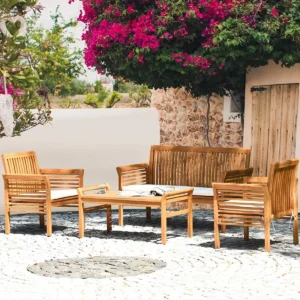
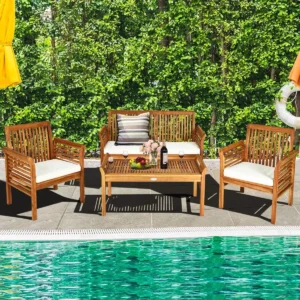
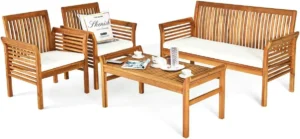
Victor is the creative soul behind WoodWorking Universe. With over 6 years of woodworking experience, his passion for design and craftsmanship is reflected in every project he undertakes. His mission is to inspire you through his work and help you discover the joy of working with your own hands.

